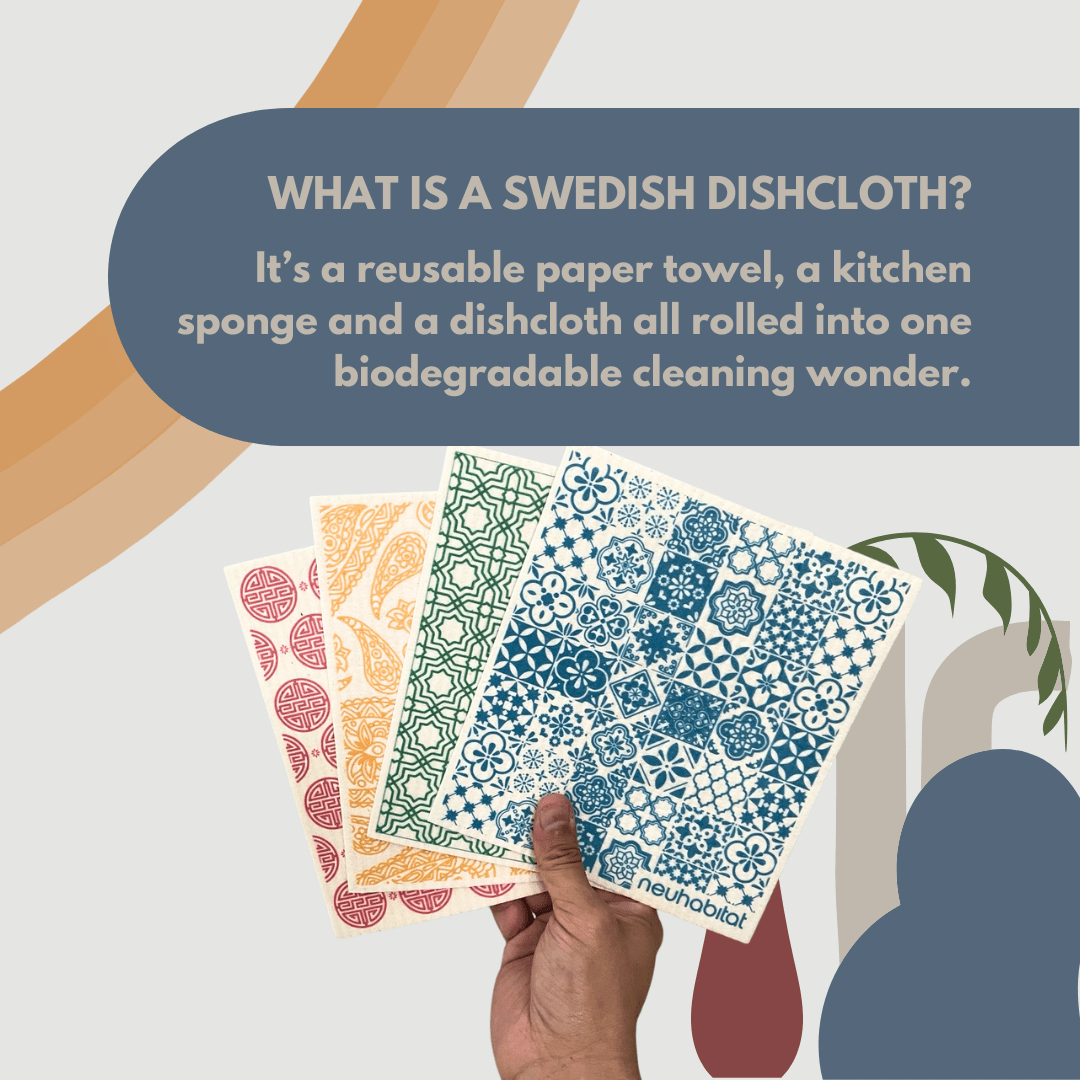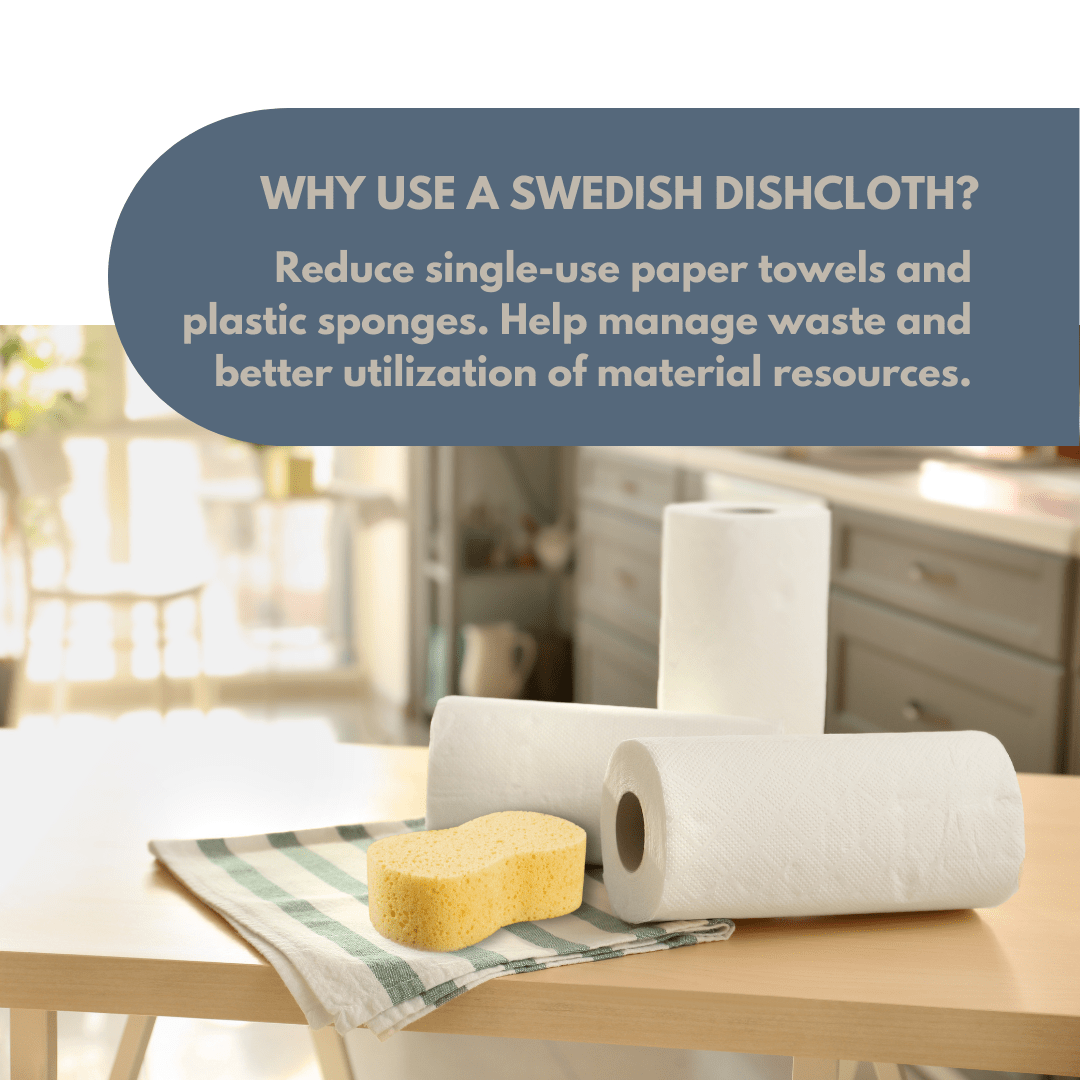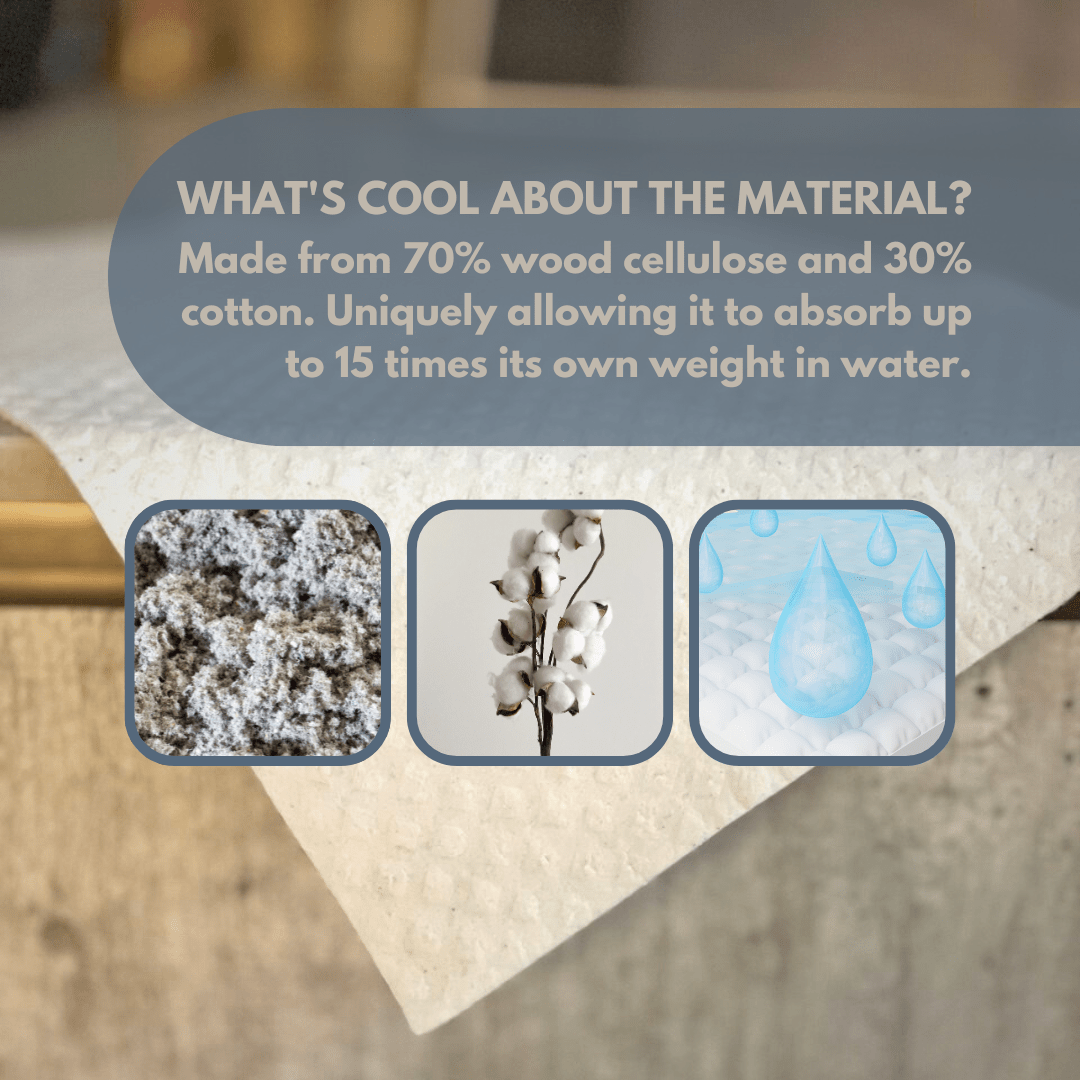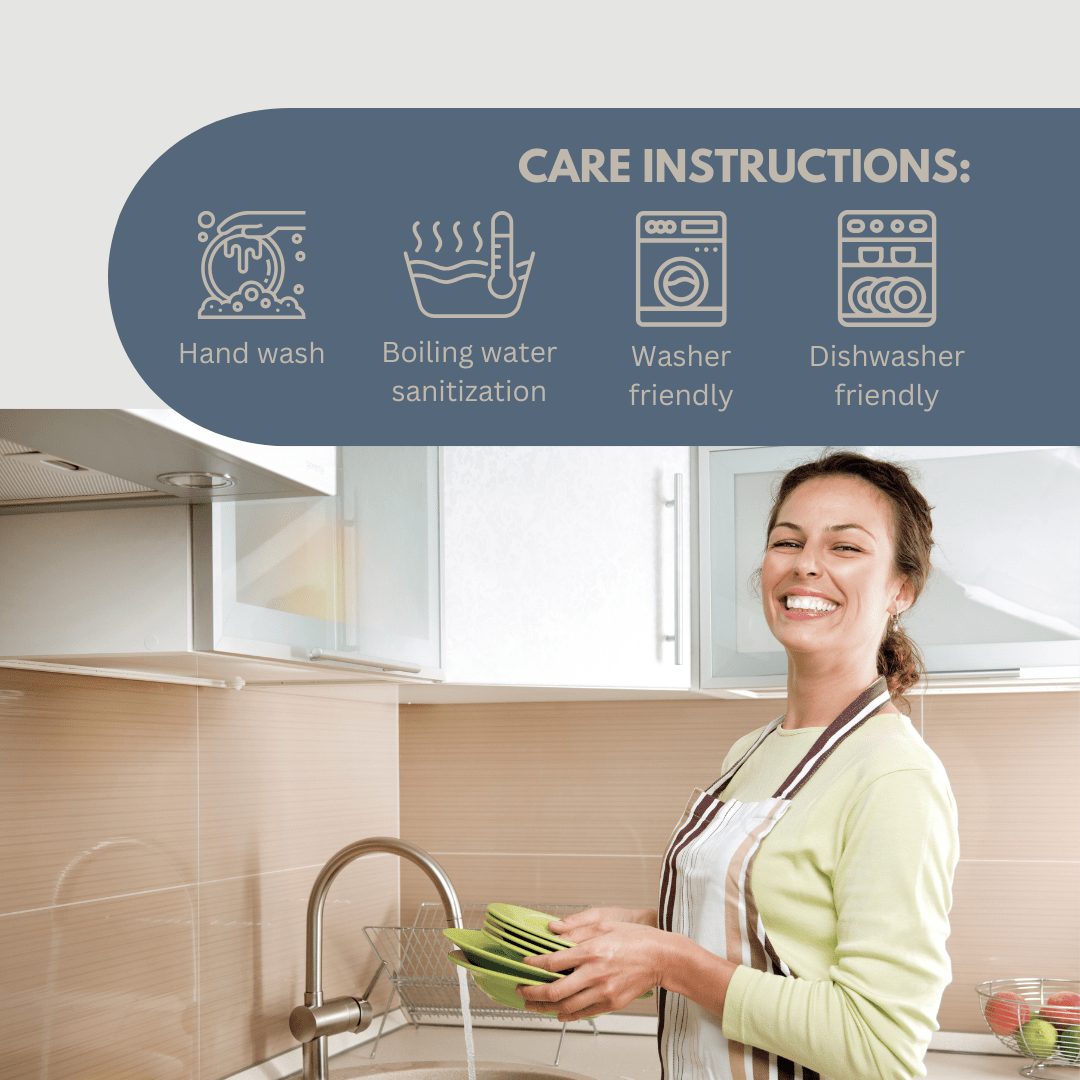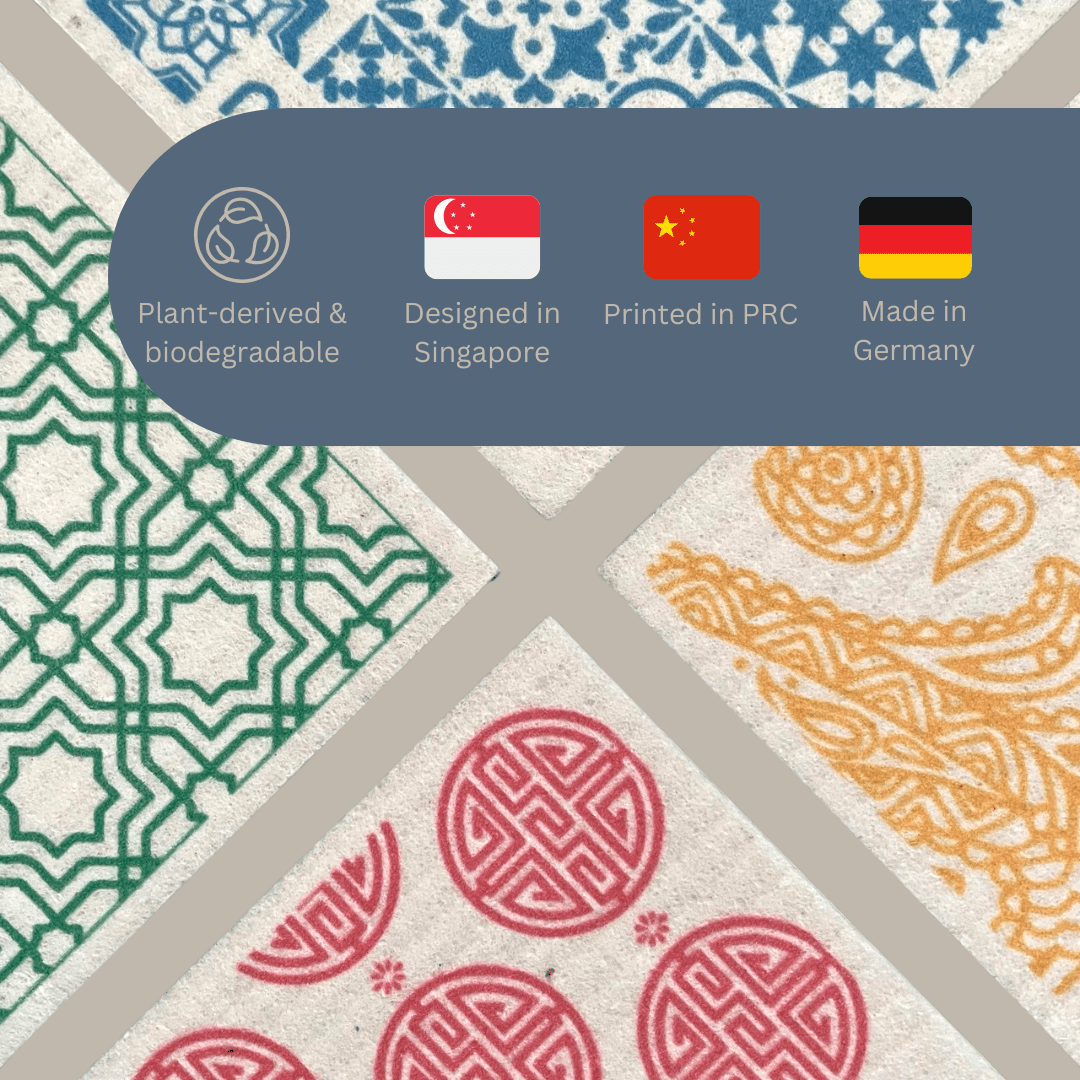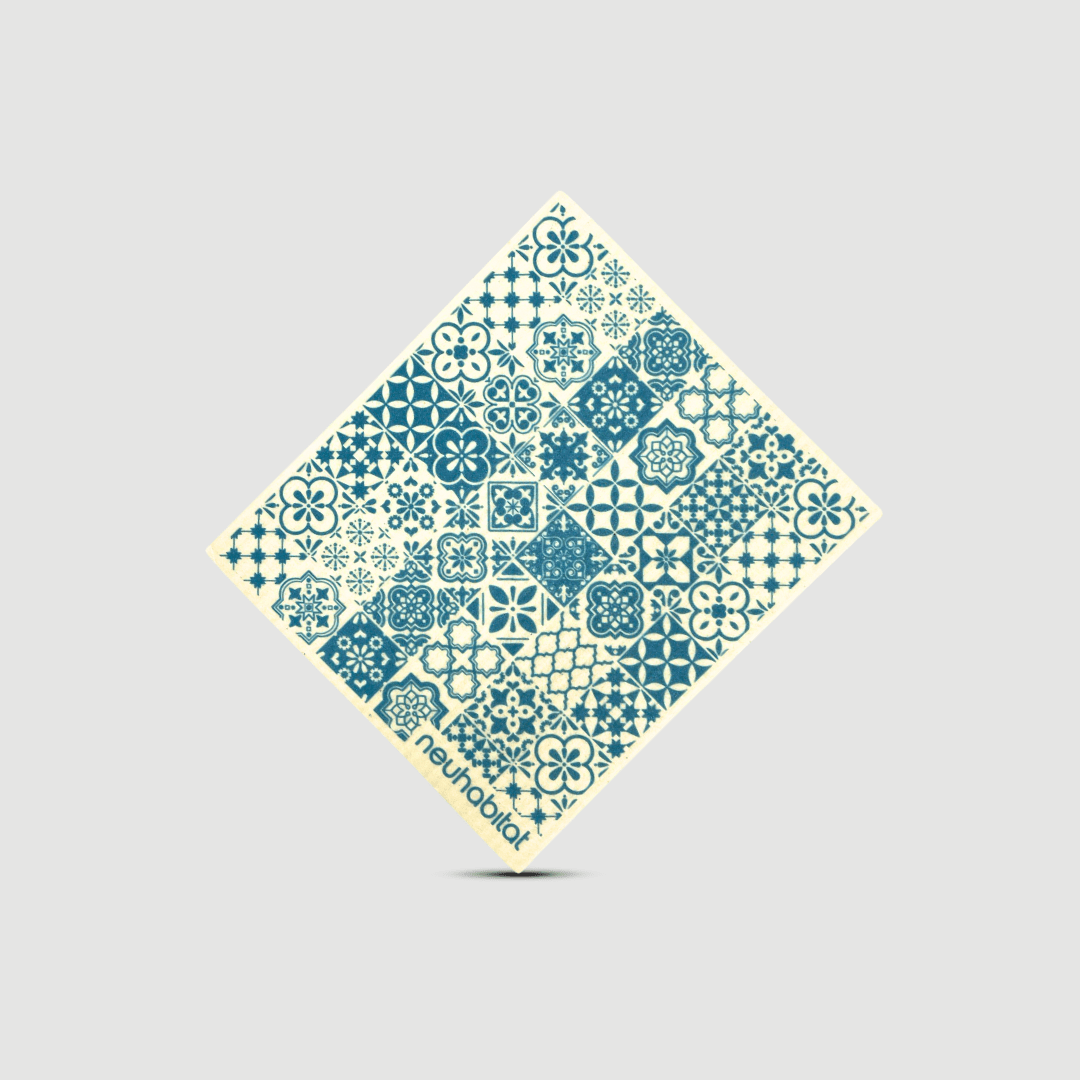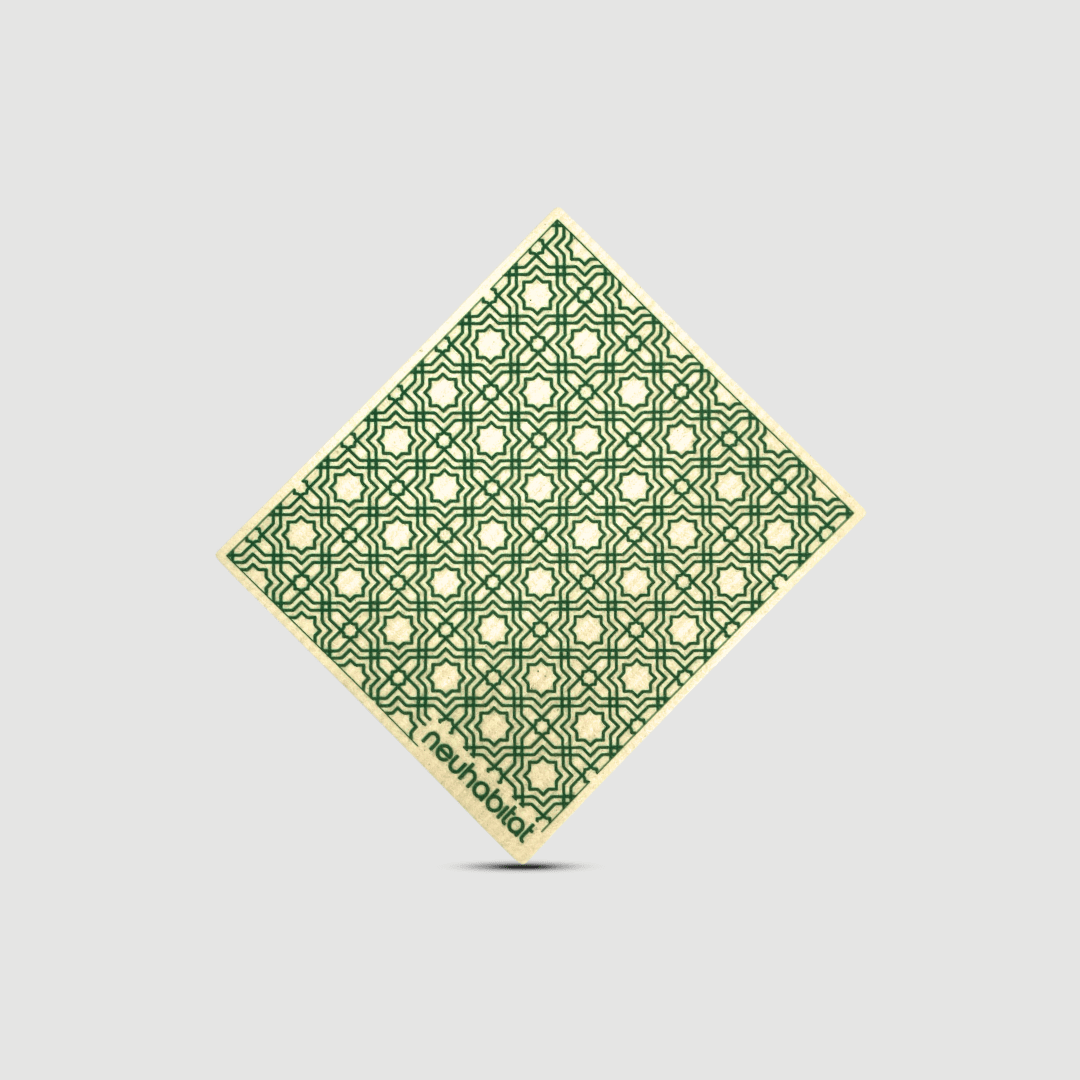Neuhabitat
Swedish Dishcloth (SG60 Collection) Earth Friendly Biodegradable Super Absorbent Multi-Purpose Cleaning White Sponge Cloth
Swedish Dishcloth (SG60 Collection) Earth Friendly Biodegradable Super Absorbent Multi-Purpose Cleaning White Sponge Cloth
Couldn't load pickup availability
The SG60 Collection.
We love arts and heritage. We love stories that transcend the fabric of our existence. That is why we create, nurture and reflect.
As Singapore celebrates its 60th birthday this year, we decided to create a collection that fully reflects our heritage and racial harmony with 4 unique prints in distinctive colors. The SG60 Collection showcases our culturally diversified society through the lens of retrospective art and history. The 4 design prints are called (in order from left to right in the listing): Azulejos, Girih, Kalka and Shòu.
Azulejos, derived from the Arabic "zellij" (polished stone), originated in 13th-century Spain as alicatados (tile mosaics) and later spread to Portugal, where they adorned religious and architectural spaces. Over 500 years, this art form became integral to Singapore’s architectural heritage, seen in historical sites like Peranakan shophouses and the Eurasian Community House, reflecting the fusion of Western and Eastern cultures. Eurasians in Singapore (about 18,000 as of 2020) emerged from intermarriages between European settlers and locals, influencing traditions and tile designs inspired by Portuguese and Spanish colonists.
The iconic blue-and-white glaze of azulejos stems from European admiration for Chinese porcelain, a luxury item due to its rarity (kaolin clay was unavailable in Europe). Dutch artisans replicated these hues in tiles during the 17th century, which the Portuguese widely imported, cementing the color scheme’s lasting legacy. This historical blend of trade, cultural exchange, and artistry underscores azulejos’ enduring significance.
"Girih", derived from Islamic geometric art (pronounced "gee-ree"), features interlaced strapwork and symmetrical patterns used in architecture and crafts. Originating around 1000 CE in Baghdad, its principles were formalized in the 10th century by Persian scholar Abu al-Wafa' Buzjani. His treatise outlined geometric constructions, such as polygons within circles, providing a foundational "grammar" for "girih" design.
Traditionally, "girih" patterns are created using hexagonal grids, compasses, and straightedges. Artisans employ techniques like incising sun-brittled paper with dividers and drawing tessellations (gap-free tiling) for precision. While classical Persian or Ottoman girih designs are uncommon in Singapore, Islamic architectural elements like symmetry and sacred geometry appear in landmarks such as the Sultan Mosque’s domes and the Malay Heritage Centre’s wood carvings, reflecting shared artistic principles.
The color green holds deep cultural significance in Islam, symbolizing hope, prosperity, and spiritual growth. Linked to the Prophet Muhammad and the Quran’s depiction of paradise (Jannah), green is prominently used in Islamic art, flags, and emblems, reinforcing its role as a bridge between divine symbolism and earthly craftsmanship.
The paisley pattern, known as "Kalka" in Indian culture, symbolizes life, eternity, and resilience, blending floral motifs (representing fertility) with cypress tree elements (symbolizing immortality). Originating in Persia as "boteh" ("shrub" or "flower"), it evolved into a teardrop-shaped design popularized in Indian block printing. During the Mughal Empire (16th–19th century), Persian artisans introduced the motif to India, where it was rebranded as "ambi" (mango) or "kalka" (opened bud), aligning it with Hindu ideals of prosperity and divine favor.
Kashmiri artisans later refined the motif into intricate "kani" embroidery on pashmina shawls, blending Persian geometry with Indian craftsmanship and elevating it to a luxury symbol for Mughal and European elites. Today, the motif merges with Indian designs like "bel" (vine) and "buta" (flower), epitomized in Mughal miniatures and "chikankari" embroidery. Its adaptability to symmetry and organic patterns reflects India’s artistic pluralism, embodying "cultural osmosis" where foreign elements are reimagined through local traditions.
The saffron hue in the paisley design holds sacred significance in Hinduism, symbolizing purity and renunciation, as seen in ascetics’ robes. The paisley’s journey—from Persian roots to a timeless emblem of India’s cultural fusion—showcases its enduring role in bridging diverse traditions and spiritual ideals.
The circular Chinese character "Shòu" (寿), symbolizing "longevity", embodies unity, wholeness, and the cyclical nature of life in Chinese culture. Often showcased during Lunar New Year, its rounded form aligns with traditional lantern designs, which share themes of "eternity" and "completeness". The SG60 Collection highlights this connection by integrating "shòu" motifs into lantern-inspired patterns, reflecting unbroken blessings and cyclical prosperity.
These designs frequently pair *shòu* with symbols like cranes (longevity), peaches (immortality), and bats ("fú" 蝠, "fortune"), creating layered meanings of auspiciousness. Displayed in homes and public spaces during festivities, our choice in fusion of "shòu" and lanterns underscores their cultural resonance as emblems of harmony, continuity, and shared heritage.
The Swedish dishcloth was invented in 1949 by Swedish engineer Curt Lindquist. He discovered that a mixture of natural wood cellulose and cotton fibers can absorb an incredible 15 times its own weight.
Widely used to replace paper towels and synthetic dishcloths, statistics have shown that almost every home in Sweden stocks this wonderful dishcloths. We know that paper towels are convenient to use, but they’re not eco-friendly. Since they can’t be recycled, about 6 million pounds of paper towels end up in landfills each year. Global paper towel production also requires an estimated 110 million trees and 130 billion gallons of water to produce, it is simply not the way forward.
By the way, it has many names, some may call it "sponge dish cloth" or "cellulose dish cloth", "kitchen sponge cloth", "European dishcloth" or "Swedish sponge", but we just like to call it "sponge cloth". Whatever name it is called, it is an essential cleaning tool for any modern and sustainable home.
Additionally, kitchen sponges made from polyurethane and polyester are generally not recyclable because they contain a large quantity of petroleum-based materials which makes their recycling impossible.
By choosing sustainable alternatives like our sponge cloth, you are helping to solve the plastic crisis and reduce carbon emissions. By replacing your synthetic kitchen sponges and reducing paper towel usage with our plant-based sponge cloths, you not only save money, but also help manage waste and pollution.
These simple, smart, and pretty sponge cloths are made of 70% wood cellulose and 30% recycled cotton fiber. They are like a cross between a paper towel and a sponge, and they can do anything a sponge can do and most of the things a paper towel can do. You can soak up spills, wash and dry the dishes, use them like coasters, and clean most surfaces without leaving any lint behind.
Wash and let them dry after your clean up session. They dry fast and actually hardens thus preventing bacteria build up and unwanted smells.
Sponge cloths are biodegradable and compostable. This means when they reach the end of their life span (usually 9-12 months), if disposed of properly in a recycle bin, it can decompose quickly once it reaches a landfill. In a compost environment, it is capable of disintegrating quickly leaving no toxicity in the soil.
Key Benefits:
• Wash and dry dishes
• Wipe down countertops
• Clean your appliances
• Soak spills and clean messes
• Clean glasses and windows without leaving streaks and lint behind
• Wash car interior and exterior
• Cleans almost any surface
Product Features:
• 1 dishcloth can absorb water 15 times its own weight
• Ripple and diamond surface enhances its capability in picking up dirt and dust
• 1 dishcloth = 17 rolls of paper towels
• 70% wood pulp cellulose and 30% recycled cotton
• Compostable and biodegradable
Material:
• Wood pulp cellulose
• Recycled cotton fiber
Product Specifications:
• Material is manufactured in Germany
• Printed & packed in China
• Size per dishcloth: 190mm x 170mm x 2mm
• Weight: 0.07kg
Package includes:
(a) 01 x Azulejos pattern sponge cloth
(b) 01 x Girih pattern sponge cloth
(c) 01 x Kalka pattern cloth cloth
(d) 01 x Shou pattern sponge cloth
User Instructions:
Don't be alarmed when it hardens, it is in its normal state. If there's a spill, simply lay it on top of the spill and soak it up. If you need to wipe stains and dirt, simply dampen and soften it with water, add a little cleaning agent and you are ready to go!
Care instructions:
Washing your sponge cloth is easy. You can just rinse it out and let it air dry, or simply toss it into the washing machine or dishwasher. Since they are made of a mix of cellulose and cotton, they will shrink when exposed to high temperatures. Just be sure to turn off the drying cycle.
*Due to light and screen settings on different devices, colour of the product may look slightly different from the picture. All measurements are approximate and may vary slightly.

